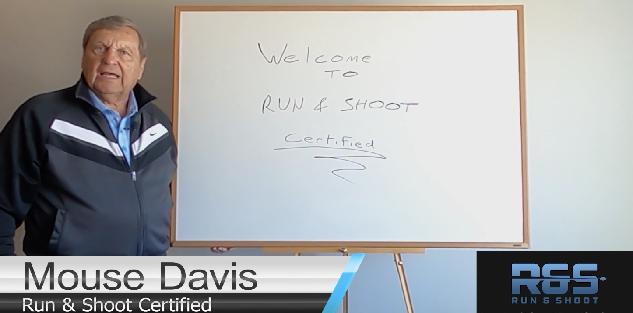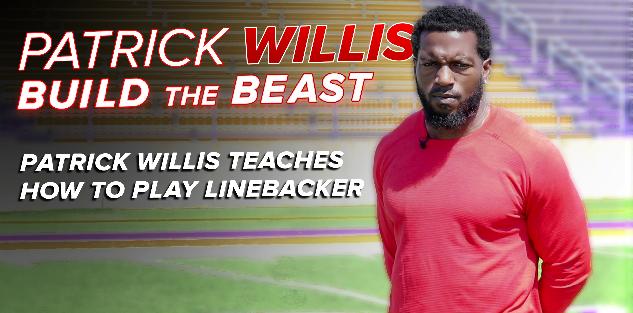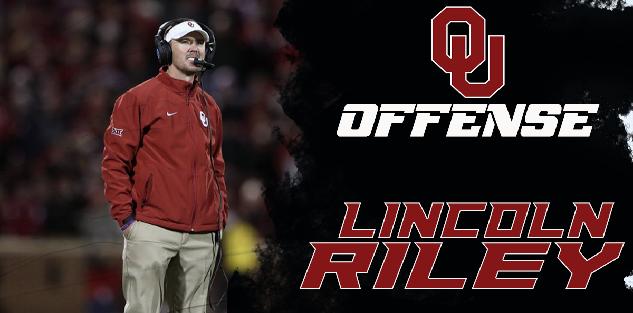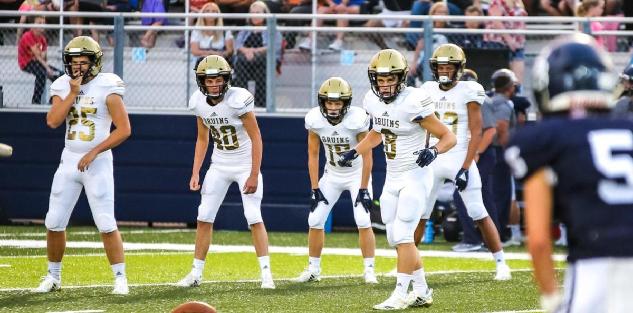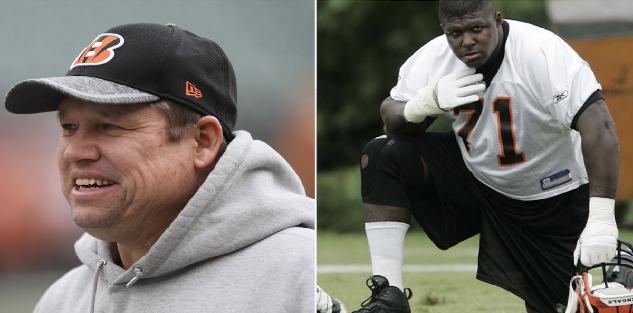Featured courses
- Jim Thorpe Award Winner Jahdae Barron’s 4 Drills for Dominating Receivers by Grant Young
- 5 Tips to Improve Your Football Game Plan by Andrew Dohre
- Game Changer RPO Football : Wing-T Offense by Andrew Dohre
- Mastering the Pass Rush: Expert Drills and Progression Tips from UCLA’s Coach Ikaika Malloe by Andrew Dohre
- 3 SPO’s to Protect the Passing Game and create opportunities in space by Keith Grabowski
- The Art of Running the Corner Route- Coaches and Players Prespectives by CoachTube Staff
- Evolve your Defense with Quarter, Quarter Half to Stop RPO by Coach Grabowski
- Top 10 College Football Players to Watch for in 2022 by Alec Burris
- Clemson vs. Syracuse Matchup of the Week by Keith Grabowski
- Sprint Out Passing: Move the Pocket for Success by Keith Grabowski
- Unlocking the True Potential of Your Special Teams Play by Keith Grabowski
- The Most Important Components of Air Raid by Keith Grabowski
- 4 Plays that Benefit from Bunch Formations by Keith Grabowski
- 3 Third Level RPOs for Explosive Plays by Keith Grabowski
- The Role of the Screen Game in Explosive Offense by Keith Grabowski
- The Chess Match: Win on the Perimeter (Part 1) by Coach Grabowski
- Unlocking the Power of Gap Manipulation to Limit Explosive Plays by Keith Grabowski
- TCU’s 3-3-5 and facing bigger personnel by Keith Grabowski
- Elevating Your Team: Strategies from Coach Matt Ruhle by Keith Grabowski
- 7 RPO’s for your playbook by Coach Keith
- Beyond Quarters - The Need For Additional Coverage Concepts by Keith Grabowski
- 5 Core Offensive Priniciples for a Winning Football Formula by Keith Grabowski
- Win Downfield - Attacking Different Areas Deep with 3rd Level RPO by Coach Grabowski
- WAKE FOREST’S UNIQUE RPO GAME by Keith Grabowski
- Adjustments to Defeat the Tite Front by Keith Grabowski
- Attack Defenses with The Versatile Y-Cross Concept by Keith Grabowski
- Play Action is a Cheat Code! - 5 Play Action Concepts to Increase Your Expected Points by Keith Grabowski
- Question from Rutgers OC - What does your offense say about your coaching? by Keith Grabowski
- Gap Schemes vs. Tight Fronts, Play Action Shots and Misdirection by Coach Grabowski
- Setting up your young Qb for success by Keith Grabowski
- The Hot Gap plus 3 Gap Scheme RPO’s to Stress the Defense by Keith Grabowski
- How Football Coaches Can Build A Game-Changing Special Teams Unit by Grant Young
- Master the Art of Quick Passing for High Completion Percentages by Keith Grabowski
- How to Be an Influential Football Coach by Grant Young
- How to Maximize Tackling Efficiency within Scheme by Keith Grabowski
- Offensive Drills of the Week by Keith Grabowski
- How a Stoplight Can Make Your Fly Sweep Takeoff by Keith Grabowski
- Keep your Drills Fresh and Your Skills Developing - Offense by Keith Grabowski
- Coach Kevin Kelley, Outside The Box by Keith Grabowski
- Want your defense to get off the field after third down? Sims and Creepers are the answer! by Keith Grabowski
- Create More Turnovers with Circuit Training & Win More Games! by Keith Grabowski
- Devastate the Defense with TE RPOs by Keith Grabowski
- Red Zone adjustments by Keith Grabowski
- CoachesClinic.com Featured Matchup: Cincinnati vs Indiana by Caleb Hopkins
- 3 NFL ZONE RUN PLAYS FROM WEEK 7 by Alex Kirby
- Sonny Dykes Teaches You How to Put Together an Offense by Coach Grabowski
- FIVE REASONS TO RUN THE 3-3 DEFENSE by Alex Kirby
- Getting Your Defense Ahead - 1st and 2nd down Pressures from Noah Joseph by John Grayson
- Chad Morris Teaches How To Builds an Offense by Coach Grabowski
- Get Your Offense a +1 With the QB Run Game by Coach Grabowski
- Are You Causing a 14 Point Turnaround...Against Your Team? by Coach Grabowski
- Learn How to Improve Your Offense with USC’s “Harrell Effect” by Coach Grabowski
- The Power of Influence - Rick Jones, Mizzou by Coach Grabowski
- Easy QB Runs to Drive Defenses Crazy by Ryan Eisenberger
- How many different ways can you make the defense cover everyone? by Ryan Eigenberger
- Win Passing Downs with Creepers and Sims by Coach Grabowski
- Always have a plan to play your best 11 by Keith Grabowski
- Dominate the Defense with Double Teams by Coach Grabowski
- Buffalo OC teaches his model for game planning by Keith Grabowski
- Put your 3 Deep Coverage in a Better Position with Zone Alert Rotations by Coach Grabowski
- 5 Keys to Using Trick Plays by Coach Grabowski
- Learn from 'Juggernaut' Offense by Keith Grabowski
- Bob Wylie - Offensive Line Breakdowns by Coach Grabowski
- Utilizing the Hybrid Linebacker to take away Offensive Advantages by Coach Grabowski
- Always have a plan to play your best 11 by Keith Grabowski
- Coachesclinic.com Featured Matchup: #6 Oklahoma vs #21 Texas by Caleb Hopkins
- Easy for You - Difficult for Them Adjustments by Keith Grabowski
- Coachesclinic.com Featured Matchup: Davidson College vs Presbyterian by Caleb Hopkins
- Week 5 National High School Football Rankings by Keith Grabowski
- Protecting Aaron Rodgers (and your own QB) by Caleb Hopkins
- Defensive Drills of the Week by Keith Grabowski
- Woo Pig - Add a wrinkle with these Arkansas Downhill Run Variations by Keith Grabowski
- Coachesclinic.com Featured Matchup: #7 Cincinnati vs #9 Notre Dame by Caleb Hopkins
- Offensive Drills of the Week by Keith Grabowski
- Coach Jason McEndoo Teaches #12 Oklahoma State’s Top Running Play by Keith Grabowski
- Adjustments - Attach Screens to your best plays, defend star receivers, & movement to stop the run by Keith Grabowski
- Coachesclinic.com Featured Matchup: Army vs #16 Wake Forest by Caleb Hopkins
- How To Implement A Running-Back-By-Committee Scheme by Brandon Ogle
- How To Become The Most Feared Offensive Lineman In Your League by Chrisian Benavides
- Wylie, McNally and Alexander Key Coaching Points on the Wide Zone Play by Keith Grabowski
- #21 Coastal Carolina’s play that is a whole offense within itself by Keith Grabowski
- 4 Plays that Benefit from Bunch Formations by Keith Grabowski
- Best Mesh Concept Plays by Ron McKie
- Forming Families For Football by Darryl Page
- Top 5 Things Coaches Should Strive To Get Out Of Spring Camp by Darryl Page
- 10 Tips To Know Before Attending Football Camps by James Breland
- Offensive Line Drills by Rick Bouch
- You’re a captain, now what? 5 Tips to bring your team together and establish yourself as a true leader by Lester Crafton
- COACHING THE 4-2-5 DEFENSE VS SPREAD TEAMS by Alex Kirby
- Gifts From Grinch by Coach Grabowski
- A Package to Help You Win Mid to Late Season by Coach Grabowski
- The Future of American Football: How to Run the Spread Offense by Coach Scott
- Chris Ash teaches Longhorn Tackling by Coach Grabowski
- The misunderstood Yet Powerful Run Scheme - Duo by Coach Keith
- THE GUS MALZAHN QUARTERBACK COUNTER PLAY by Alex Kirby
- FIVE TIPS FROM GUS MALZAHN ON HOW TO BUILD YOUR PLAYBOOK by Alex Kirby
- LITTLEST KID ON THE FIELD TRUCKS LINEMAN – YOU CAN’T MAKE THIS STUFF UP by Jacob
- HOW TO MAXIMIZE YOUR OFFSEASON FOOTBALL TRAINING by Dominic
- BAD CALL, GREAT COACH: THIS IS WHY PLAYERS LOVE PETE CARROLL by Jacob
- How to Get Recruited for Collegiate Sports by Brandon Ogle
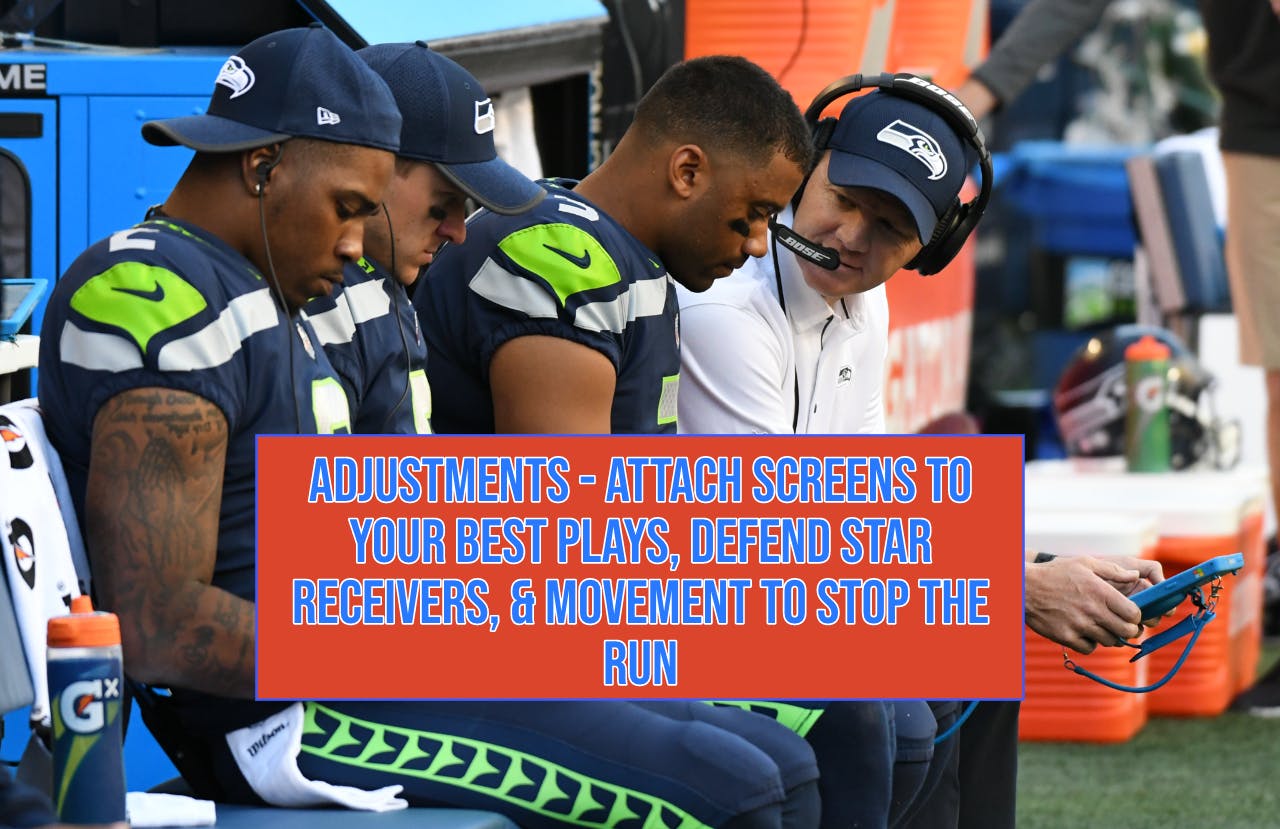
Adjustments - Attach Screens to your best plays, defend star receivers, & movement to stop the run
It’s another week of looking at some possible adjustments, tweaks, and wrinkles to keep your offense and defense rolling.
Offense
We are hitting mid-season and teams have gotten a chance to see what you do. They are studying you on film and trying to hone in on your tendencies. The last thing you want is your offense to bog down.
Finding a way to pick up a chunk of yardage or even a touchdown at a critical time can help propel your team towards its goals.
Adding a screen to what you already do can be a great way to get an explosive play and break a tendency. If you already run screens, you can make your screen game more multiple or add a screen to some of your best runs, passes, or even add to a wrinkle that you have already added.
In all of football, I believe that the Cleveland Browns are the best executing their screen game, and also the most creative. What makes their screen game so good beyond the execution is that they run their screens off of runs, passes, play actions, and even gadget plays that they have run before.
The purpose of any screen is to get the defense focused on one thing, chasing that down, and then getting your blockers on to level 2 and level 3.
We will share some ideas for exactly how to do that.
Joe Davis, the offensive coordinator at the University of Albany, has a solution that can make the screen game an explosive part of any offense.
Davis has Albany’s offense rolling as they have seen significant improvement in just about every offensive statistical category. For Davis, designing an offense for player success is a priority. He’s applied that to the screen game.
Davis likes the screen game for several reasons:
It creates an extension of the running game
It provides the quarterback confidence with easy completions
It creates momentum and rhythm for the offense while getting the ball to playmakers quickly and without downfield reads for the QB
Touches! Any player can get a touch in the screen game with Davis’s concept
Consistency for the offensive line - multiple screens with the same rules for OL
Davis talks about what he looks to accomplish in the screen game in this video (click on image fo video):
Davis incorporates screens to every skill position on the field. They utilize some of their best offensive plays to create a defensive reaction to stop that play while allowing space to be created for the screen runner.
An example of that is the tight end throwback screen off of their sprint-out look shown in this video (click on image for video):
Finding a way to get the most out of every concept you install into your offense this year can create a distinct advantage for your team. The creativity is on you as the coach. Think about how you can tag this into your best plays whether they are run or pass.
But I don’t have a screen installed
Don’t have a screen concept in? Not a problem. The shallow screen can provide huge benefits without having to involve your offensive line.
Josh Herring, the offensive coordinator at Jones County High School in Georgia (2019 state semifinalist), utilizes is the shallow screen which they call “Police.” It’s a concept that was popularized by Oklahoma State about a decade ago and is based on a basic shallow utilized in the air raid offense.
The Benefits of Shallow Screen
It’s a throw that is short and requires no read. That means it’s good for the experienced quarterback as well as the backup who might have to come into a game unexpectedly
To a defense everything initially shows that it is a drop-back pass. There are no linemen releasing to get downfield, so there isn’t a key to defeat a block to beat the screen so it doesn’t even matter that the defense is yelling “watch the screen.”.
For the quarterback, the thinking is out of his hands. He needs to get eyes downfield first and then throw underneath. The complicated reads are removed, allowing for a dynamic player to have the ball in space with blockers.
This is an effective strategy when facing teams who get into their drops well, even teams that play drop eight.
Key Coaching Points
The wide receiver should aim at the feet of the defensive line and come straight down the line. He will “flush” at the center going behind the line of scrimmage. The key to any variation of this is that the blocks are legal because the ball is thrown to a shallow runner behind the line of scrimmage.
The quarterback is looking at routes downfield to be sure defenders are moving, then he can come down to the shallow runner for the throw.
Three of the receivers have specific blocking points and assignments which springs the shallow runner into space where he can make plays. The assignments are explained by Herring in the video.
Defense
On the defensive side of the ball, let’s look at two simple concepts that can help you neutralize an offense. Let’s start with the secondary.
Steve Specht is one of America’s top high school coaches and his ability as a teacher of the game shines through. He utilizes a strategy that can be applied in every defense to take away a star receiver regardless of where he may be aligned.
The first step in the process is to identify the key receiver. In this video, Coach Specht explains how it is done with them using two types of ID, “snake” and “mouse.” (Click on image for Video):
From there Coach Specht has different rules for how they will defend a single receiver, a #1, #2, or #3. He notes that this concept can be utilized with any type of defense. Here he explains how they will defend the single receiver (Click on image for Video):
For more on how to defend #1, #2, and #3 go here.
The next aspect of causing havoc for an offense, especially the line is to move.
Dave Cohen at Wake Forest has to face some very tough offensive linemen on his schedule. His years of experience have taught him how to beat those bigger, more physical offensive lines. He teaches two simple movements and techniques that allow his defensive linemen to win the line of scrimmage.
The other effective way he likes to cancel gaps is with a stunt which he calls Tex. It allows them to solve issues with corner force and allows for a cut-back player.
The problem is that with a normal stunt you will lose the corner force vs. a Gap Scheme. This provides an answer. He explains the concept here (Click on Image for Video):
Maybe these weren’t the exact answer you needed right now, but hopefully, it provides some food for thought on how you can make some adjustments to keep your units performing at a high level.
In addition, you can be thinking ahead about what your answers would be to these adjustments if you ended up facing them.
Good luck with your preparations this week.



